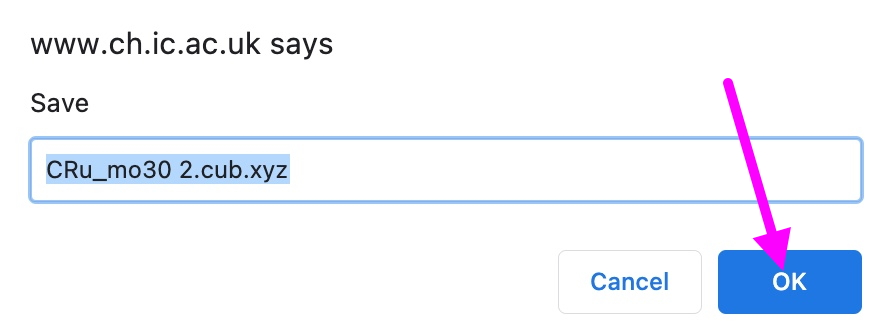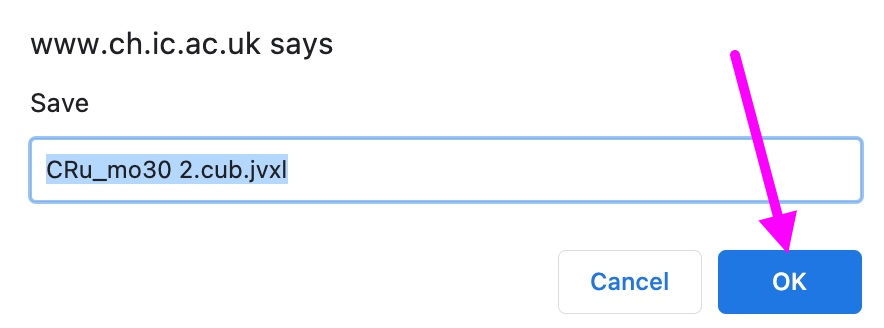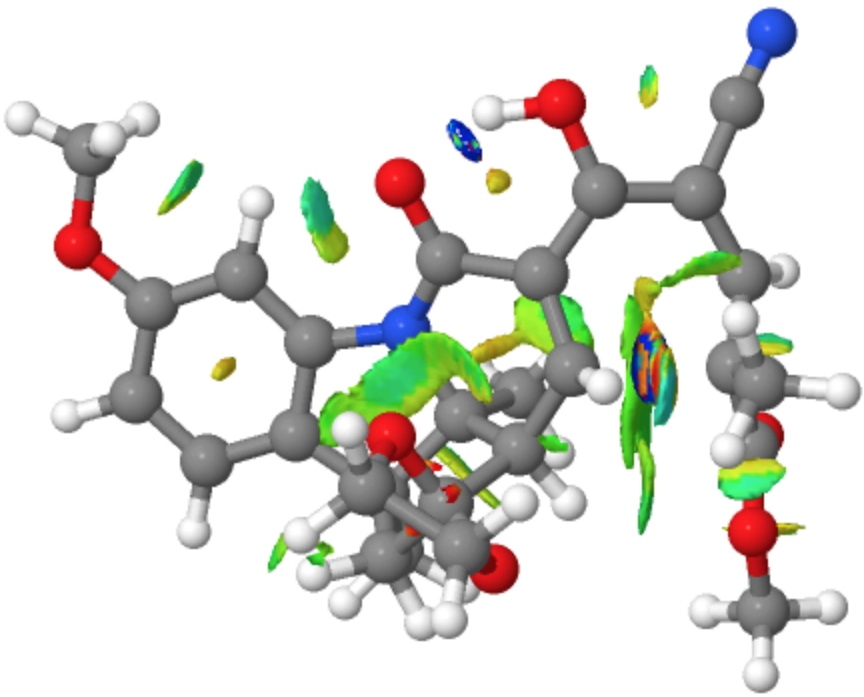Select isosurface value:
-

-

-
 (Chrome only)
(Chrome only)
-

-

-
 SCF-based NCI plot (Link to NCI test file)
SCF-based NCI plot (Link to NCI test file)
This script will invoke a file dialog to open a .cub file and will save two resulting files to your local directory (in the downloads area by default). Important:. The .cub files must be located in a directory for a local hard drive rather than in a network directory. Thus drive C:\temp is fine, but drive H: is not (it is a network drive).
The .jvxl file will be around 100 to 150 times smaller than the original .cub (which is pretty much the purpose of doing all of this). You could if you wanted reduce it further in size by compressing it using gzip (JSmol will automatically detect and decompress this). You will end up with something that looks like name.jvxl.gz and you can safely rename this file to the original name.jvxl
Important: Tested using Safari, Chrome and Firefox.
|
Select isosurface value: | |
Expected behaviour: On selecting one of the above surface thresholds, you should get the following prompts:
| |
The following parameters are used to create the NCI surface based on SCF density;
isosurface parameters [0.5 1 0.0005 0.05 0.95 1.00] NCI "";color isosurface
"bgyor" range -0.04 0.04;
where